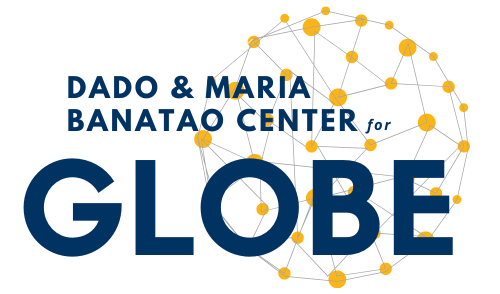Mandy Pham’s Summer 2024 Research Internship at National University of Singapore
January 14, 2025 By Grace Qian (Edit)
Read below about Mandy Pham’s Summer 2024 Research Internship at National University of Singapore!

Mandy’s Internship Journal:
About Me
Hello! My name is Mandy Pham and I am studying Electrical Engineering and Computer Sciences at UC Berkeley – I will graduate in 2027. I received the GLOBE scholarship, allowing me to have spent my summer at the National University of Singapore as a research intern. I thoroughly enjoy dancing, swimming, and cooking! I love being outdoors and spending most of my time with my family and friends.
Introduction
As a research intern, I worked on visibility-based robot target localization and tracking. It was an amazing experience as it allowed me to apply transferable skills and work from a clean slate, given that I had no prior research experience. The project focused on investigating the capabilities needed to localize an evasive target and tackle or capture it, considering the rapid development of affordable robots with embedded sensing and mobility.
Furthermore, I got to explore an amazing and beautiful place! Singapore is a clean and centrally-planned city with many areas to explore. Whether you’re interested in nature, nightlife, or studying, everything is provided here. Although it is very research heavy, I was able to explore and meet other students and colleagues at the internship. Stay tuned for recommendations!

About the Research
Autonomous mobile robots are increasingly deployed in hazardous and repetitive tasks, replacing or assisting human workers. In visibility-based pursuit-evasion scenarios, these robots often simulate evasion strategies against mobile pursuers in complex environments. However, current simulations typically rely on simplistic evasion methods or human control, limiting their effectiveness and real-world applicability.
This study proposes a novel algorithm for autonomous evasion, implemented using ROS2, Python, and TurtleBot 3 platforms. The algorithm leverages artificial potential fields (APF) to develop a coordinated yet distributed policy for evader robots to avoid pursuers effectively. By employing machine learning techniques, the system adapts to various scenarios without requiring manual intervention.
The proposed approach significantly outperforms non-learning planners in terms of evasion speed and success rate. It demonstrates emergent coordinated behaviors among multiple evader agents and shows remarkable adaptability to challenging scenarios based on obstacle detection, including varying team sizes of pursuers and complex environmental layouts.
Simulations and hardware deployments validate the algorithm’s effectiveness, showcasing its potential for real-world applications in autonomous robotics. This research contributes to the advancement of pursuit-evasion strategies in robotics and offers a promising solution for enhancing the autonomy and efficiency of mobile robot systems in dynamic, multi-agent environments.
My work and findings
Myself and other PHD students evaluated our evader model’s performance in known environments, with results detailed in image 4.1. Our key contribution lies in the implementation and testing of this model in physical experiments with set environmental paths. Aside from the virtual simulation and despite primarily training in simulated unknown environments, the model demonstrates considerable adaptability to real-world known environments, showing little change in performance \cite{MDPIRobotics2023}. This adaptability is largely attributed to our novel design of the agent observations, which focus exclusively on the utility, represented by the observable boundaries between safe and hazardous areas in the physical space.
To test the UGV manually and based on a generalization of the algorithm, we introduce a new dataset comprising 100 maps with significantly more complex typologies than those in the training set, each four times larger in area. These findings underscore the model’s capability to generalize to significantly diverse and challenging environments with minimal performance impact.
The evader, whether manually controlled or potentially autonomous, may exhibit inaccuracies in speed and rotation due to various factors such as sensor noise or mechanical limitations. Despite these challenges, the model exhibits robustness against mid-task agent failures, effectively adapting its strategy to prevent further compromise from failed evaders. This resilience is crucial in real-world scenarios where perfect performance cannot be guaranteed, ensuring the system can maintain operational integrity even under adverse conditions.


Concluding thoughts – 1. Research
While the TurtleBot3 evader is not yet fully autonomous, we are in the process of translating the algorithm into ROS2 for physical implementation. Our current simulation results for autonomous evaders and pursuers imply that learning-based approaches can potentially outperform traditional non-learning planners in complex pursuit-evasion scenarios, suggesting limitations in conventional methods for these tasks.
The simulation based on the APF algorithm shows promise in overcoming limitations of existing methods, particularly those that rely on large teams of agents. In simulation, the evader consistently avoids corners and maintains a good distance from the searcher. The simulated evader’s ability to detect obstacles and searchers enables more accurate and adaptable evasion strategies, which could inform the development of more robust pursuit systems.
Potential limitations include the complexity of accurately modeling long-term influences of evaders’ decisions on obstacle avoidance, as well as challenges in translating simulated performance to real-world scenarios. Future research will focus on completing the ROS2 implementation for the TurtleBot3, further improving the efficiency of information encoding for neural networks, and enhancing the accuracy of the APF algorithm for autonomous evaders in physical, interchangeable tasks.
Concluding Thoughts of My Experience
This overall experience has not only broadened my view of different aspects of work and engineering but has also granted me an opportunity to network with various communities. I had the chance to meet researchers, professors, and students from different schools and backgrounds within the program.
The students in the program truly enriched my journey, and I thoroughly enjoyed my time at NUS. The people I met and the friends I made along the way made my time in Singapore much more special and enjoyable. I cherish this experience deeply and had an amazing time.

